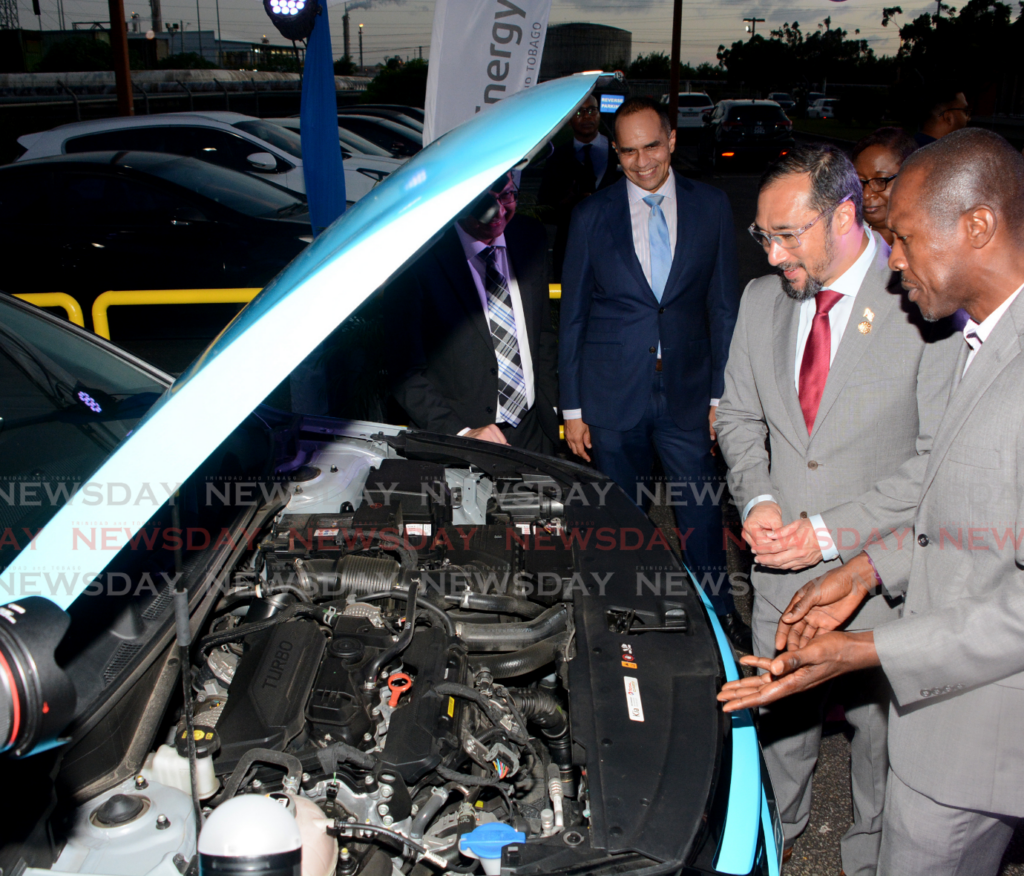Trinidad and Tobago moves closer to commercialised methanol fuel

TT is now one step closer to having blended methanol fuel commercially available after a recently concluded demonstration programme showed locally available vehicles can run effectively on the alternative fuel.
Called M15, the fuel is a blend of 15 per cent methanol and 85 per cent gasoline.
Speaking at a ceremony at the company’s Pt Lisas compound, Methanex president Colin Bain said methanol burned cleaner than gasoline and was an affordable substitute. He said its efficient combustion, safety and availability locally made it an attractive alternative for transportation.
University of the West Indies (UWI) lecturer at its department of mechanical and manufacturing engineering Dr Renique Murray said recent testing showed significant success in locally available vehicles without any modifications.
He said while there were working examples of the fuel internationally, researchers wanted to test how it would perform in a local setting under this country’s unique conditions.
That included laboratory testing with three QG 15 engines which are common in Nissan vehicles and were run for 400 hours before being evaluated; two with the M15 blend and one with super gas as a control. Testing was also done on the road with 12 vehicles from makers like Kia, Suzuki, Nissan, Honda, Mercedes Benz, Hyundia and Audi.
Murray said there was an average of between 15 to 25 per cent decrease in carbon dioxide emissions per unit volume, a ten per cent increase in power output and increased mileage between fill-ups all while not causing any issues with the car’s computers or degradation of fuel lines.
He said those benefits could be even greater if modifications were made to the engine and suggested further research into it. Notably, he said some vehicles did not see any decrease in emissions which could be remedied by making alterations to the engines.
He also noted there was degradation in the rubber seals within the fuel system after 200 hours of testing in parts that were not E10-rated (as some newer vehicles are), particularly the injector seals. He also recommended further research be conducted into the storage and distribution of blended fuel at commercial fuel stations.
With statistics showing the transportation sector is responsible for 21 per cent of global carbon dioxide emissions, Bain said using the lower-emission blended fuel aligned with the country’s commitment to the Paris Agreement to reduce carbon emissions by 15 per cent by 2030.
Apart from environmental benefits, Bain said blended fuel use could have financial benefits to taxpayers.
“Over the last ten years, the government has spent over $20 billion in (fuel) subsidies which is a significant portion of its expenditure. Therefore whilst the fuel subsidy has historically supported the local economy, we have to look toward sustainability as well.
“Transitioning toward fuel blending not only offers a pathway to alleviate the financial impact on the government but also fosters economic diversification, sustainability and resilience in the face of global energy challenges.”
Methonex estimates adopting the blended fuel could lead to a potential annual savings of US $12 million.
Minister of Energy and Energy Industries Stuart Young described the development as an example of the country’s commitment to doing its part in combating climate change.
“I have every intention for us to introduce this fuel blending going forward.”
He said he intends to also get Paria Fuel Trading Company Ltd involved to provide the blend locally and export it regionally.
“So that once again, we can ensure we are at the forefront.”
He also commended Methanex for demonstrating the region’s first ship-to-ship methanol bunkering in August as he said government was looking to the marine sector in its diversification plans, especially under his term as prime minister.
“A big part of what I am planning, not only a green port, but also ensuring that we can offer cleaner fuels for the maritime industry, because we’re perfectly poised to offer that, and methanol is an important component.”
The project began in 2021 with a memorandum of understanding between Methonex and National Energy to explore the use of methanol as a fuel for transport. The UWI and TT Bureau of Standards also partnered on the project.

Comments
"Trinidad and Tobago moves closer to commercialised methanol fuel"